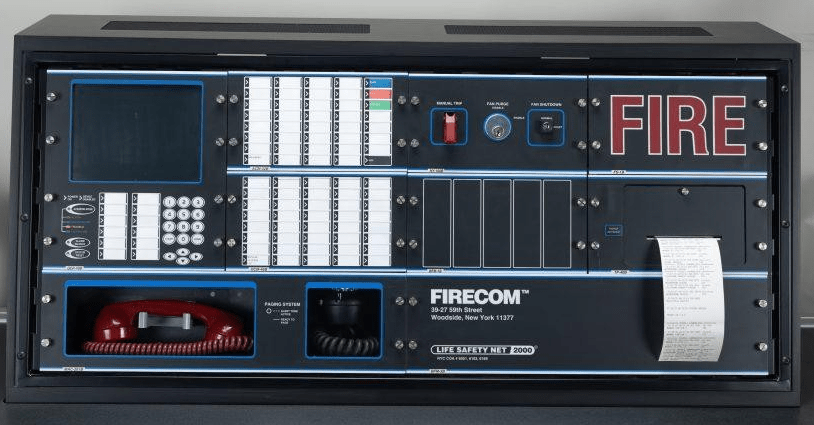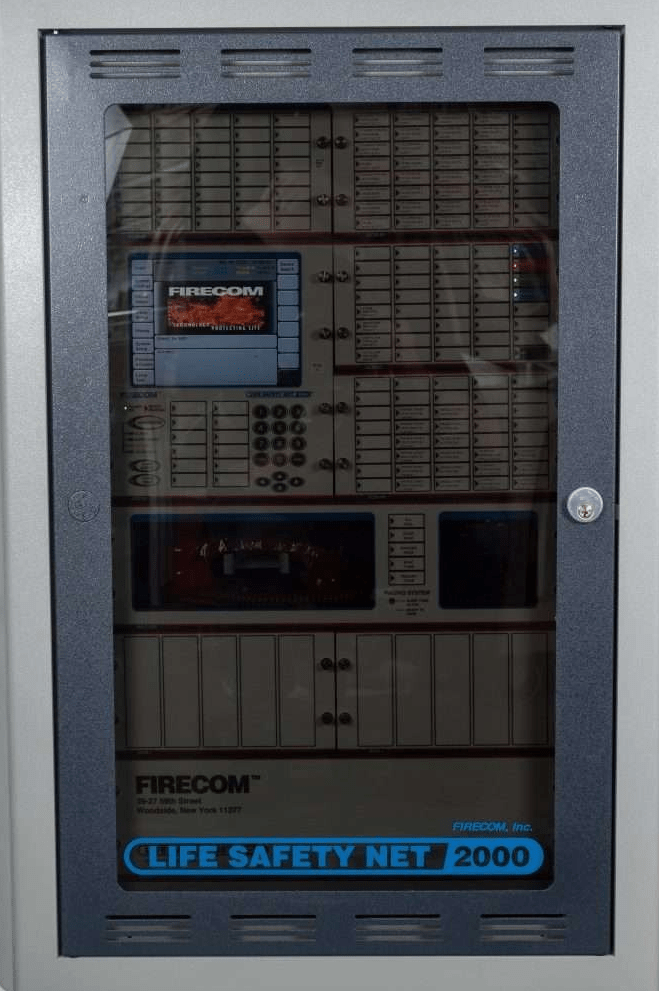
Timeline for transitioning from EST3 to EST4
The transition from EST3 to EST4 is a crucial step for any organization looking to stay at the forefront of technology and enhance their efficiency and productivity. In this article, we will explore the timeline for this important transition and discuss the various aspects that need to be considered for a successful migration.
Understanding the Need for Transition
In today’s fast-paced world, it is essential for businesses to embrace technological advancements to remain competitive. The transition from EST3 to EST4 is driven by the need for improved functionality, enhanced features, and better integration capabilities. EST4 brings a host of benefits that can revolutionize the way organizations manage their critical systems and ensure safety and security.
With the rapid advancement of technology, businesses are constantly seeking ways to stay ahead of the curve. The transition from EST3 to EST4 is a strategic move that allows organizations to harness the power of cutting-edge technology. By embracing EST4, businesses can unlock a world of possibilities and gain a competitive edge in the market.
Identifying the Differences between EST3 and EST4
Before diving into the transition process, it is important to understand the key differences between EST3 and EST4. While EST3 has been a reliable system for many years, EST4 offers advanced features such as a streamlined user interface, scalable architecture, enhanced networking capabilities, and improved reporting functionalities.
The streamlined user interface of EST4 provides a user-friendly experience, making it easier for organizations to navigate and operate the system. The scalable architecture allows businesses to expand their operations without worrying about system limitations. With enhanced networking capabilities, EST4 enables seamless integration with other systems, creating a cohesive and efficient infrastructure.
Furthermore, the improved reporting functionalities of EST4 empower organizations with valuable insights. The system generates comprehensive reports that provide detailed information on system performance, incidents, and trends. These reports enable businesses to make data-driven decisions and optimize their operations.
Benefits of Upgrading to EST4
The transition to EST4 brings numerous benefits that can positively impact your organization. One of the key advantages is the ability to integrate with other technology systems, such as access control and video surveillance, creating a unified and efficient security infrastructure.
By integrating EST4 with access control systems, organizations can enhance their security measures. The system allows for seamless access management, ensuring that only authorized individuals can enter restricted areas. This integration also enables organizations to monitor and track access activities, providing an additional layer of security.
Incorporating video surveillance into EST4 further enhances the security infrastructure. The system enables real-time monitoring and recording of video footage, allowing organizations to quickly identify and respond to potential threats. With EST4, businesses can have peace of mind knowing that their critical systems are protected.
Additionally, EST4 offers enhanced emergency response capabilities, including faster detection of incidents and quicker communication with emergency services. The system utilizes advanced sensors and detectors to promptly identify potential emergencies, enabling organizations to take immediate action. With improved communication features, EST4 ensures that emergency services are notified promptly, reducing response times and minimizing potential damages.
Furthermore, the improved reporting features of EST4 allow for better analysis and decision-making. The system generates detailed reports on system performance, incidents, and trends, providing organizations with valuable insights. These reports enable businesses to identify areas for improvement, optimize their operations, and enhance overall efficiency.
In conclusion, the transition from EST3 to EST4 is a strategic move that offers numerous benefits for organizations. By embracing EST4, businesses can unlock advanced features, enhance security measures, improve emergency response capabilities, and gain valuable insights through comprehensive reporting functionalities. The transition to EST4 is not just an upgrade; it is a step towards a more efficient and secure future.
Preparing for the Transition
Before embarking on the transition journey, it is crucial to thoroughly evaluate your current EST3 setup and understand the resources required for a successful upgrade. This will ensure a smooth and efficient transition to the new EST4 system.
Transitioning from one fire alarm system to another is a complex process that requires careful planning and consideration. By evaluating your current EST3 setup, you can identify any potential challenges or limitations that may arise during the transition. This evaluation involves assessing various aspects of your existing configuration, including the number and type of devices, communication modules, and software versions.
During the evaluation process, it is important to take into account the compatibility between your current EST3 system and the new EST4 system. This will help you determine if any hardware or software upgrades are necessary to ensure a seamless transition. By addressing compatibility issues early on, you can avoid potential disruptions or incompatibilities that may occur during the upgrade.
Evaluating Your Current EST3 Setup
Start by assessing your existing EST3 configuration, including the number and type of devices, communication modules, and software versions. This evaluation will help you identify any compatibility issues and plan for the necessary hardware or software upgrades. It is also an opportunity to review your current system’s performance and address any limitations or inefficiencies.
During the evaluation process, consider the functionality and performance of your current EST3 system. Are there any areas where the system could be improved or optimized? Are there any devices or modules that are outdated or no longer supported? By identifying these areas, you can ensure that the transition to EST4 not only brings you up to date but also enhances the overall performance and functionality of your fire alarm system.
Additionally, evaluate the scalability of your current EST3 setup. Will the new EST4 system be able to accommodate any future expansion or changes in your facility? It is important to consider the long-term needs of your organization and ensure that the new system can support any future growth or modifications.
Necessary Resources for Transition
Transitioning to EST4 requires careful consideration of the resources needed for a smooth migration process. This includes ensuring compatibility of wiring and infrastructure with the new system, as well as procuring the required hardware and software licenses. It is crucial to involve the relevant stakeholders in these discussions to ensure a comprehensive assessment and allocation of necessary resources.
When evaluating the necessary resources, it is important to consider the physical infrastructure of your facility. Are there any limitations or constraints that may impact the installation of the new system? This could include factors such as available space, wiring infrastructure, or power requirements. By addressing these considerations early on, you can avoid any delays or complications during the transition process.
In addition to the physical resources, it is also important to consider the human resources required for the transition. This includes identifying the individuals or teams responsible for overseeing the upgrade, as well as any training or support that may be needed. By involving the relevant stakeholders and ensuring adequate training, you can minimize any potential disruptions and ensure a successful transition to the new EST4 system.
Furthermore, it is essential to allocate the necessary budget for the transition. This includes not only the cost of procuring the hardware and software licenses but also any additional expenses such as installation, training, and ongoing maintenance. By carefully planning and budgeting for these expenses, you can ensure a smooth transition without any unexpected financial burdens.
In conclusion, preparing for the transition from EST3 to EST4 requires a comprehensive evaluation of your current setup and a thorough understanding of the necessary resources. By addressing compatibility issues, evaluating system performance, and considering the physical and human resources required, you can ensure a successful upgrade to the new fire alarm system.
Detailed Transition Timeline
Transitioning from EST3 to EST4 requires a well-defined and structured plan to minimize disruptions and ensure a seamless migration. Let’s break down the timeline into three key phases:
Initial Planning Phase
In this phase, gather a cross-functional team comprising representatives from security, IT, facilities, and other relevant departments. Define the project scope, objectives, and timeline. Conduct a thorough assessment of your current system and evaluate potential risks and challenges.
During the assessment, consider factors such as the compatibility of the new system with your existing infrastructure, the availability of technical expertise within your organization, and any potential impact on day-to-day operations. This phase is crucial for setting the foundation of a successful transition.
Once the assessment is complete, it’s time to develop a detailed transition plan. This plan should include specific milestones and tasks, assign responsibilities to team members, and secure necessary approvals and budget allocation. By having a well-defined plan, you can ensure that everyone involved is on the same page and understands their role in the transition process.
Implementation Phase
During the implementation phase, it’s time to put the transition plan into action. This phase requires a systematic approach to ensure a smooth and efficient migration.
One of the key steps in this phase is installing the new hardware and software components. This may involve working closely with vendors or IT specialists to ensure that the installation is done correctly and in a timely manner. It’s important to consider any necessary downtime or disruptions to your operations during this process and plan accordingly.
Once the new system is installed, the next step is to configure it according to your organization’s specific requirements. This may involve customizing settings, integrating with other relevant security systems, and ensuring that the new system aligns with your overall security strategy.
Throughout the implementation phase, it’s crucial to maintain open communication with the project team. Regular meetings and updates can help address any technical issues or challenges that may arise. By promptly addressing these issues, you can minimize the impact on the transition timeline and ensure a successful implementation.
Testing and Troubleshooting Phase
Once the new system is installed and configured, thorough testing and troubleshooting are essential to ensure its functionality and compatibility.
Developing a comprehensive testing plan is critical during this phase. This plan should cover various scenarios and use cases to ensure that the new system meets your organization’s needs. It’s important to involve key stakeholders in the testing process and gather their feedback to validate the success of the transition.
During testing, it’s common to encounter issues or areas that require fine-tuning. This phase provides an opportunity to identify and resolve any issues, ensuring that the new system operates smoothly and effectively.
Conducting user acceptance testing is another crucial step in this phase. By involving end-users in the testing process, you can gather valuable feedback and ensure that the new system meets their needs and expectations.
Before finalizing the transition, it’s important to obtain feedback from key stakeholders and address any concerns or suggestions they may have. This feedback can help fine-tune the system and ensure that it aligns with your organization’s overall goals and objectives.
By following this detailed transition timeline, you can minimize disruptions and ensure a seamless migration from EST3 to EST4. Each phase plays a crucial role in the overall success of the transition, from initial planning to implementation and testing. With careful planning, effective communication, and thorough testing, you can successfully transition to the new system and take advantage of its enhanced features and capabilities.
Post-Transition Considerations
Transitioning to EST4 is not just about completing the migration process but also about effectively utilizing the new system to maximize its benefits.
After successfully migrating to EST4, there are several important considerations to keep in mind to ensure a smooth and efficient operation. These considerations include training staff on EST4 and implementing ongoing maintenance and updates.
Training Staff on EST4
Investing in comprehensive training for your staff is essential to ensure smooth adoption and utilization of EST4’s features. By providing your employees with the necessary knowledge and skills, you can empower them to make the most of the new system.
Develop training programs tailored to the specific roles and responsibilities of your employees. This will help them understand how to navigate the system effectively, ensuring that they can easily access the information they need. Additionally, training should cover emergency response procedures, as EST4 may have specific protocols in place to handle different types of emergencies.
Another important aspect of training is to educate your staff on the advanced reporting capabilities of EST4. This will enable them to generate comprehensive reports and analyze data more effectively, ultimately improving decision-making processes within your organization.
Promote a culture of continuous learning within your organization by offering ongoing support and resources. This can include providing access to training materials, conducting refresher courses, and establishing a help desk for staff to address any questions or challenges that may arise during the transition period.
Ongoing Maintenance and Updates
To reap the full benefits of EST4, it is important to establish a proactive maintenance and update schedule. Regularly reviewing the system’s performance and conducting software updates and patches will help ensure that EST4 operates at its optimal level.
In addition to software updates, it is crucial to monitor the hardware components of EST4. This includes checking the functionality of servers, network infrastructure, and any other equipment that supports the system. By regularly maintaining and optimizing the hardware, you can prevent potential issues and ensure a reliable and efficient operation.
Staying up to date with the latest technology trends and industry best practices is also essential. By keeping abreast of advancements in the field, you can leverage the full potential of your upgraded system. This may involve attending conferences, participating in webinars, or joining industry forums to stay informed about the latest developments.
Furthermore, consider establishing a feedback loop with your staff to gather insights and suggestions for system improvements. This can help identify areas that require further attention or enhancements, ensuring that EST4 continues to meet the evolving needs of your organization.
By prioritizing staff training and ongoing maintenance, you can maximize the benefits of transitioning to EST4. With a well-trained workforce and a well-maintained system, you can enhance operational efficiency, improve emergency response capabilities, and drive overall organizational success.
Overcoming Potential Challenges
During the transition process, organizations may face certain challenges that need to be addressed proactively. Being aware of these challenges and having solutions in place will help ensure a successful migration.
One of the common challenges that organizations may encounter during the transition is data migration. Moving large amounts of data from one system to another can be a complex task, often requiring careful planning and execution. It is important to ensure that data is transferred accurately and securely, without any loss or corruption. To overcome this challenge, organizations can employ data migration tools and techniques that are specifically designed for seamless data transfer between systems.
Another potential challenge is compatibility issues with existing systems. When transitioning to a new system, it is essential to ensure that it can integrate smoothly with the organization’s existing infrastructure. Incompatibilities can lead to disruptions in operations and hinder the overall transition process. To address this challenge, organizations can perform compatibility tests and engage with experienced system integrators who can provide guidance and assistance in resolving any compatibility issues.
Resistance to change from end-users is also a common challenge during the transition process. Employees may be resistant to adopting new technologies or processes, which can impact the successful implementation of the new system. To overcome this challenge, organizations can implement effective change management practices. This includes clear communication about the benefits of the new system, providing training programs to familiarize users with the new technology, and involving employees in the decision-making process to increase their sense of ownership and engagement.
Common Issues in Transitioning
It is crucial to anticipate potential issues such as data migration challenges, compatibility issues with existing systems, and resistance to change from end-users. By conducting thorough risk assessments and developing contingency plans, you can mitigate these challenges and minimize their impact on the transition process.
During the transition, organizations may also face challenges related to system downtime. As the old system is phased out and the new system is implemented, there may be periods of downtime where certain functions or processes are temporarily unavailable. To minimize the impact of system downtime, organizations can schedule the transition during off-peak hours or weekends, ensuring that critical operations are not disrupted. Additionally, having backup systems in place can provide a fail-safe mechanism to ensure continuity of operations during the transition.
Another potential challenge is the need for additional training and support for end-users. As employees adapt to the new system, they may require additional training and support to fully utilize its features and functionalities. Organizations can address this challenge by providing comprehensive training programs, user manuals, and access to support resources. This will empower employees to effectively use the new system and maximize its benefits.
Solutions and Workarounds for Transition Challenges
To overcome the challenges encountered during the transition, consider engaging with experienced system integrators or seeking support from the EST4 manufacturer. Leverage their expertise to develop tailored solutions and workarounds for specific challenges. These experts can provide valuable insights and recommendations based on their experience with similar transitions, helping organizations navigate through potential obstacles.
In addition to external support, promoting effective change management practices within the organization can significantly contribute to a smooth transition. Clear communication about the transition process, its benefits, and the expected impact on employees can help address resistance to change. Providing training programs that are specifically designed to address the needs of end-users can also enhance their confidence and competence in using the new system. By actively involving employees in the transition process and soliciting their feedback, organizations can foster a sense of ownership and engagement, further facilitating a successful migration.
Conclusion: Embracing the Future with EST4
The transition from EST3 to EST4 is an important step in embracing the future of security systems. Understanding the need for transition, preparing for the migration, following a well-defined timeline, and addressing potential challenges will ensure a successful upgrade. By embracing the advanced features and benefits of EST4, organizations can enhance their safety and security infrastructure, improve operational efficiencies, and position themselves at the forefront of technology.


